Electronic door lock: features of selection and operation
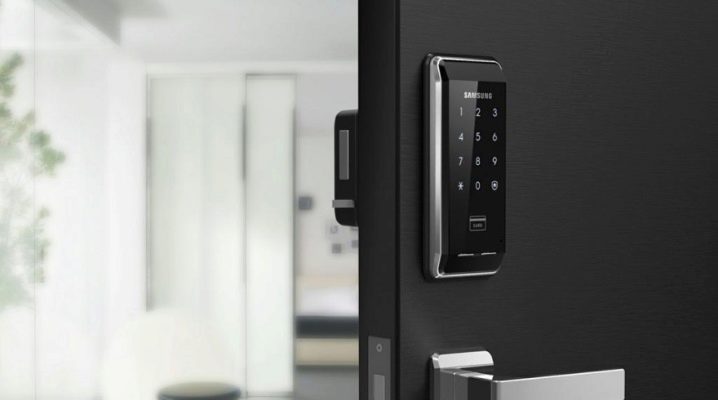
Among the many advanced solutions responsible for the security of apartments, houses and non-residential premises, an increasingly prominent place is occupied by electronic locks. First of all, this is due to the reliability of such devices, which ensures their long-term and trouble-free operation.
Also noteworthy is the impressive selection of models of electronic door locks, which allows you to choose an option with all the features of interest to the buyer.
Design and device
Today there are a large number of types of electronic locks, each of which has its own specific design. If we single out the common components for all such devices, then their list will look like this:
- locking mechanism (electromagnetic or electromechanical);
- reader (highly sensitive sensor responsible for signal reception);
- an identifier that performs the functions of a key (a card with a chip, a remote control, a magnetic key fob and other devices determined by the type of installed electric lock);
- controller (a component responsible for managing the system and processing incoming data).
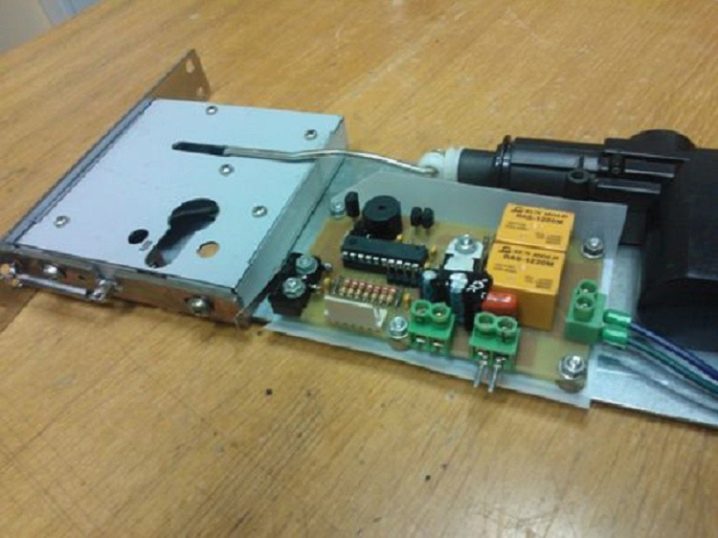
In addition, the design of the electronic lock can provide a compartment for batteries (rechargeable batteries or simple batteries), ensuring uninterrupted operation of the device.
Special attention should be paid to two types of locks described - electromagnetic and electromechanical. The design of the first provides for the presence of a main element, which is a powerful electromagnet, and an auxiliary part - a strip made of metal with increased magnetic permeability. As for the second type of locks, their design involves the use of a locking bolt connected to an electric drive, and a control module connected by means of wires.
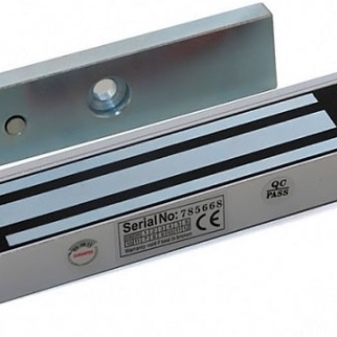
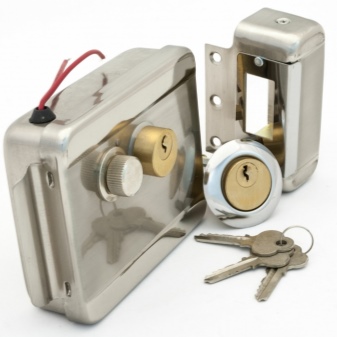
Operating principle
Despite the fact that electronic locks are quite complex devices, they all work on the basis of a simple algorithm:
- reading data from the owner ID performed by the receiving sensor;
- transmission of the received information to the controller;
- checking the correctness of the signal with the subsequent transmission of the corresponding command to the electric lock mechanism;
- if the input is correct, the device opens the door (in case of receiving incorrect data, the controller may give an alarm signal).
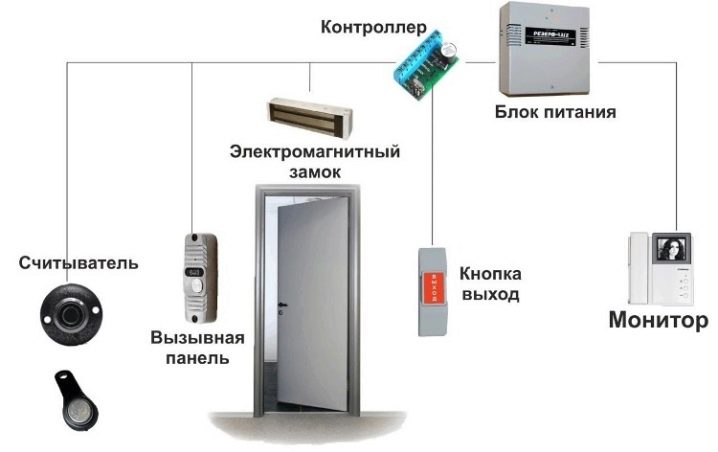
The operability of any such system is provided by a power supply source - main or reserve, provided for use in emergency situations. Most often, the second option does not require the installation of high-capacity batteries, since electronic locks use up the charge very economically.
Another significant feature of the described devices is the possibility of duplication or simultaneous use of several access methods. So, a numerical combination can be supplemented by scanning a fingerprint, and the presence of a key fob will allow you to open the door only after confirmation from a smartphone or other portable device.
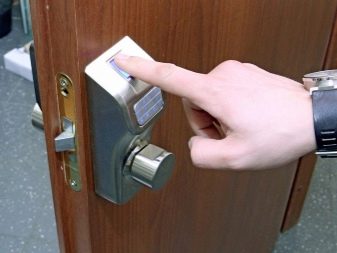
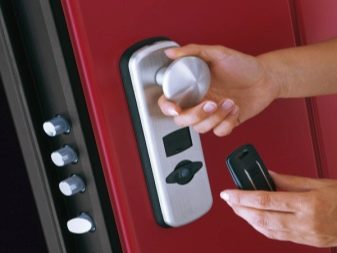
Practice shows that such solutions significantly reduce the likelihood of hacking, but make the system more complex and expensive.
If the owner wants to restrict access to the premises, he can use the electronic lock blocking function. It can be activated by a special key, which makes it impossible for the device to be triggered by a signal from the sensor.
Another feature that many electric locks can boast of is the remote control function. Often, such devices are one of the elements of a “smart home” - an automated system that provides full monitoring of a home by its owner.
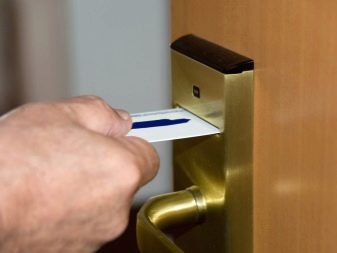
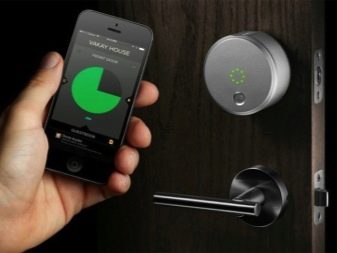
Advantages and disadvantages
There are many reasons for the growing popularity of electronic locks. As for the most significant advantages of these devices, they are listed below.
- Lack of standard keyholes. This feature of electronic locks significantly complicates the procedure for breaking them, requiring a significant amount of time from the attacker.
- Minimum chance of unauthorized opening of a biometric lock. The only thing an attacker can do with such devices is to destroy them, wasting time and risking the attention of others.
- The possibility of equipping with an alarm. Any actions that have signs of burglary lead to instantaneous operation of this system and negate the likelihood of unauthorized entry into the room.
- No problems caused by the loss of the identifier key. In such situations, it is enough to call a specialist who performs the reprogramming of electronic locks.
- Remote opening capability. This advantage allows the owner to save time and effort, which is especially noticeable on objects with a large area.
- Minimum probability of detecting an electronic invisible lock. Such a device remains hidden from prying eyes, and its exact location is known only to the owner of the premises.
- Aesthetic and modern appearance. The keypad of an electronic lock or a unit with a sensor is organically complemented by a neat and ergonomic handle.
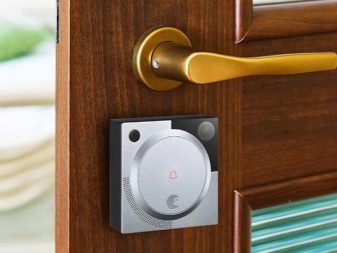
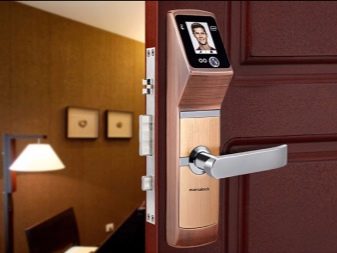
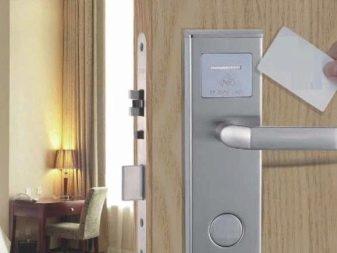

In addition, the considered devices can have many additional features - for example, blocking access due to unsuccessful identification or working only at a time specified by the owner of the premises.
Considering the listed advantages, it should not be surprising that electronic locks are used both in offices, warehouses and industrial facilities, and in residential premises - apartments and private houses.
As for the shortcomings of the described devices, they also exist, albeit in a relatively small amount:
- the need for a backup power source;
- high sensitivity to voltage drops, making it desirable to use a stabilizer;
- tendency to breakage of individual components during prolonged work in high humidity conditions.
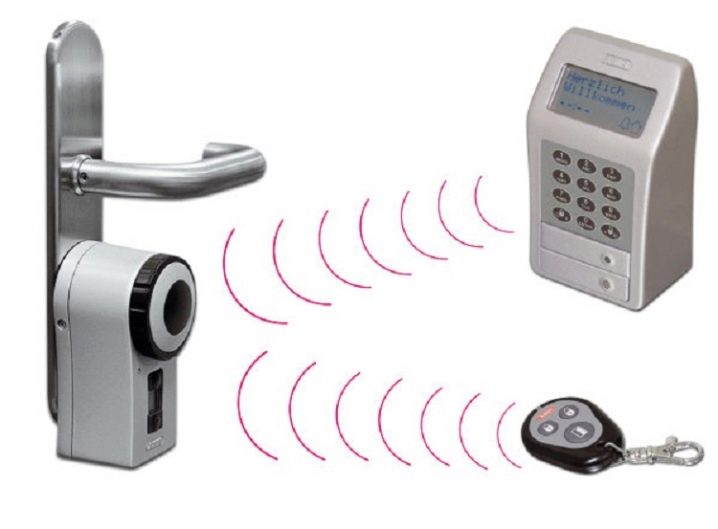
And also it is worth mentioning the significant expenditure of time required to restore the failed elements of the electronic lock.
Varieties and recommendations for choosing
Talking about access restriction devices that have the root "electro" in their name, it is necessary to pay attention to the following varieties of them, which are the most demanded.
- Electronic locks with coded or combined opening. Most of all, such solutions are suitable for entrance doors to courtyards, apartments or entrances.
- Systems that provide for the use of two types of identifiers - cards equipped with a magnetic stripe or electronic key fobs.
- Invisible locks. Such solutions are interesting in that they do not imply the presence of a panel with buttons or a device for reading data. Electronic locks of this type are controlled by a special remote control or a portable device with wireless connectivity.
- Biometric devices.To enter the premises, the visitor must successfully complete the procedure for scanning a fingerprint or retina.

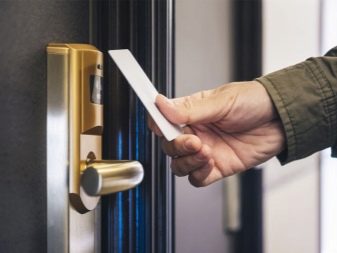
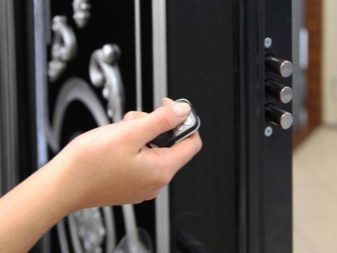
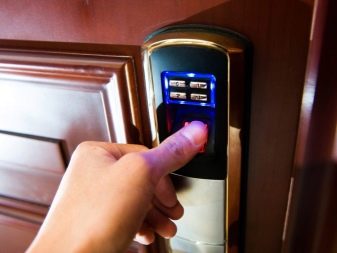
Having decided on the most suitable type of electronic lock, it is advisable to take into account some useful recommendations before buying it.
- One of the key conditions, taking into account which allows you to acquire a device of proper quality, is the impeccable reputation of its manufacturer. Such locks are not cheap, but their price is justified by their reliability and a decent work resource.
- To protect private households, it is justified to install systems equipped with a remote control. As a rule, in such cases, the doors are very massive, which requires preliminary familiarization with the instructions for the electronic lock in order to know what weight it is designed for. In addition, the purchased device must correspond to the climate of the area and its other features.
- It is desirable to install magnetic type systems on plastic doors. They have no moving or protruding parts, they are quiet and have excellent wear resistance.
- In office premises, it is worth installing devices that work with access cards on glass doors.
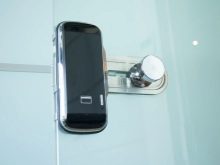
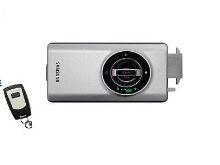

And also experts advise to consider the door leaf and the installed electronic lock as a whole. Thus, the devices at the entrance to the premises must differ from those mounted on the interior doors - in accordance with the tasks for which they are intended.
Installation technology
Experience shows that the installation of a patch electronic lock is not particularly difficult. To solve this problem, you must:
- pre-mark the area selected for editing;
- drill mounting holes that match the size of the bolts used;
- make a through hole required to connect the lock body with the reader module;
- install and securely fix the case;
- install the strike plate of the lock;
- install the reader module.
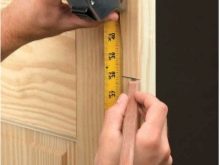

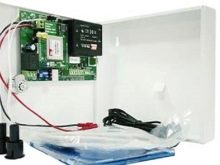
In a situation where the owner of the premises wants to install a mortise type of lock, he needs:
- first remove the door (to ensure maximum convenience of further work);
- determine the size of a niche for an electronic lock;
- perform the appropriate markup and clipping;
- thoroughly clean the resulting hole and eliminate all irregularities in it;
- perform the installation of the lock with its reliable fixation.
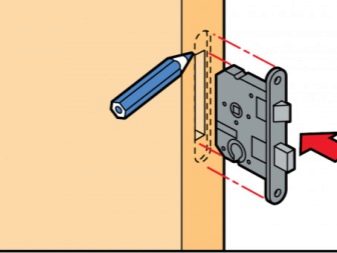
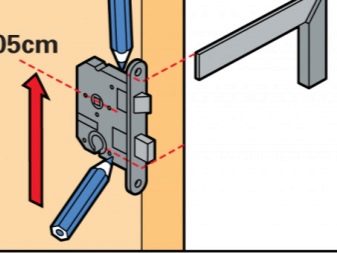
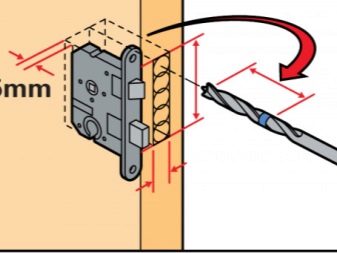
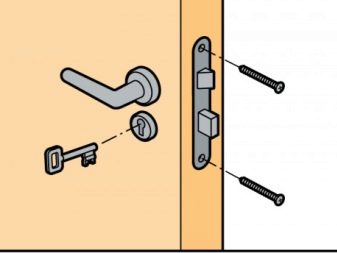
After completing the aforementioned activities, the device can be connected by strictly following the instructions supplied with it. If this task is too difficult for the performer, he should contact the specialists in order to prevent mistakes and subsequent incorrect operation of the electronic lock.
Operating tips
In conclusion, it remains to list the recommendations, following which allows you to extend the operation of the electronic lock and achieve maximum efficiency of its use:
- in order to minimize the likelihood of a device failure, it is necessary to protect it from moisture (as much as possible);
- if the principle of operation of an electronic lock provides for the introduction of a code, the latter should not be too simple (also, when choosing it, personal data should not be used, due to the fact that they may be known to a potential intruder);
- if the owner wants to extend the operational life of the lock, he should equip the door with an automatic door closer;
- in order to minimize the likelihood of unauthorized entry into the premises, the code for the device must be changed periodically (the best option is once every 2-3 months).
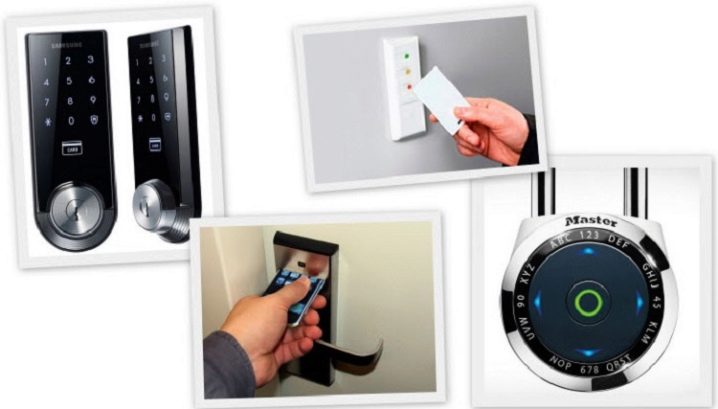
Experts do not advise neglecting the regular maintenance of the electronic lock, even if its operation is not satisfactory. Following this recommendation, you can identify problems at an early stage, preventing them with minimal financial costs.
Summing up, it remains to state that the installation of an electronic lock on the door is a completely justified solution that ensures reliable protection of the room thanks to the use of advanced technologies.
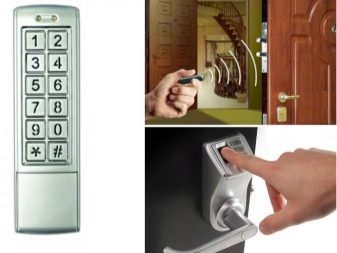

The validity of this thesis is confirmed by both professionals and ordinary users, whose number is steadily growing from year to year.
Installation of an electronic lock is presented in the video below.













The comment was sent successfully.